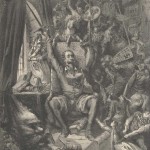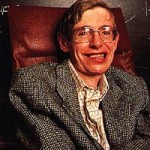Caufield Meets Quixote
 Last Thursday, a brief was filed with the United States Court of Appeals for the Second Circuit in the case of Salinger v. Colting. This lawsuit, alleging breach of copyright, has received a great deal of attention because the plaintiff is the reclusive author J.D. Salinger. He sued Swedish author Fredrik Colting in New York over the latter’s book 60 Years Later: Coming Through the Rye, a novel in which one character is a 76 year old Holden Caufield. United States District Judge Deborah Batts rejected Colting’s argument that his use of the Holden Caufield character constituted a critical commentary on the Salinger novel The Catcher in the Rye, and therefore fell within the “fair use” exception to copyright infringement. She granted Salinger’s request for a preliminary injunction preventing the publication of the work in the United States. Salinger’s lawyers filed a brief asking the Second Circuit to uphold Judge Batts’ order on August 13.
Last Thursday, a brief was filed with the United States Court of Appeals for the Second Circuit in the case of Salinger v. Colting. This lawsuit, alleging breach of copyright, has received a great deal of attention because the plaintiff is the reclusive author J.D. Salinger. He sued Swedish author Fredrik Colting in New York over the latter’s book 60 Years Later: Coming Through the Rye, a novel in which one character is a 76 year old Holden Caufield. United States District Judge Deborah Batts rejected Colting’s argument that his use of the Holden Caufield character constituted a critical commentary on the Salinger novel The Catcher in the Rye, and therefore fell within the “fair use” exception to copyright infringement. She granted Salinger’s request for a preliminary injunction preventing the publication of the work in the United States. Salinger’s lawyers filed a brief asking the Second Circuit to uphold Judge Batts’ order on August 13.
Some observers of the case have focused on its unusual grant of the plaintiff’s request for an injunction — this is a rare instance of U.S. law allowing a prior restraint on publication. Other observers have debated the intersection of First Amendment rights and copyright protections implicated by the lawsuit. In contrast, when I heard about the case, my thoughts turned to Don Quixote.

 At first blush, one would not think that Barney Frank and Stephen Hawking would have anything in common. The first is the Chairman of the House Financial Services Committee, and is currently conducting hearings on the regulatory reform of the financial markets. The second is the noted University of Cambridge professor of theoretical physics and the author of the best selling book A Brief History of Time.
At first blush, one would not think that Barney Frank and Stephen Hawking would have anything in common. The first is the Chairman of the House Financial Services Committee, and is currently conducting hearings on the regulatory reform of the financial markets. The second is the noted University of Cambridge professor of theoretical physics and the author of the best selling book A Brief History of Time. The confirmation hearings for Judge Sonia Sotomayor are over, and the reviews have been overwhelmingly negative. The public tuned in expecting a discussion of the nominee’s qualifications and a debate on the role of the Supreme Court in our constitutional system. What they got, instead, was a battle of metaphors.
The confirmation hearings for Judge Sonia Sotomayor are over, and the reviews have been overwhelmingly negative. The public tuned in expecting a discussion of the nominee’s qualifications and a debate on the role of the Supreme Court in our constitutional system. What they got, instead, was a battle of metaphors.